The Royal Air Force has announced the arrival of two new F-35B Lightning jets at RAF Marham.
According to the RAF, the aircraft made the long journey from Lockheed Martin’s facility in Fort Worth, Texas, supported by an RAF Brize Norton Voyager. The new arrivals highlight the UK’s continued commitment to expanding its cutting-edge combat capabilities.
The RAF stated on social media: “After a long journey from @LockheedMartin in Fort Worth Texas, two new F-35B Lightning jets have arrived @RAF_Marham. Supported by an @RAFBrizeNorton Voyager, they represent the UK’s ongoing effort to maintain advanced air power and an important step in the F-35 program.”
These new additions mark a significant enhancement to the UK’s carrier strike capabilities, with the F-35B playing a central role aboard the Royal Navy’s Queen Elizabeth-class aircraft carriers. The jets will further bolster the UK’s ability to project air power and maintain air superiority as part of the ongoing modernisation of the RAF’s fighter fleet.
There is an expectation that all of the 47 in the first batch will be delivered by the end of 2025. Note that it would have been 48 if one didn’t crash.
After that, the Ministry of Defence expressed the intention to purchase another tranche of jets. Funding has been delegated for an additional tranche of F-35B jets for Britain beyond the 48 already ordered.
How many are expected?
According to the Defence Command Paper titled ‘Defence in a Competitive Age’, the UK intends to increase the fleet size beyond the 48 F-35 aircraft it has already ordered.
“The Royal Air Force will continue to grow its Combat Air capacity over the next few years as we fully establish all seven operational Typhoon Squadrons and grow the Lightning II Force, increasing the fleet size beyond the 48 aircraft that we have already ordered. Together they will provide a formidable capability, which will be continually upgraded to meet the threat, exploit multi domain integration and expand utility.
The Royal Air Force will spiral develop Typhoon capability, integrate new weapons such as the UK developed ‘SPEAR Cap 3’ precision air launched weapon and invest in the Radar 2 programme to give it a powerful electronically scanned array radar. We will integrate more UK weapons onto Lightning II and invest to ensure that its software and capability are updated alongside the rest of the global F 35 fleet.”


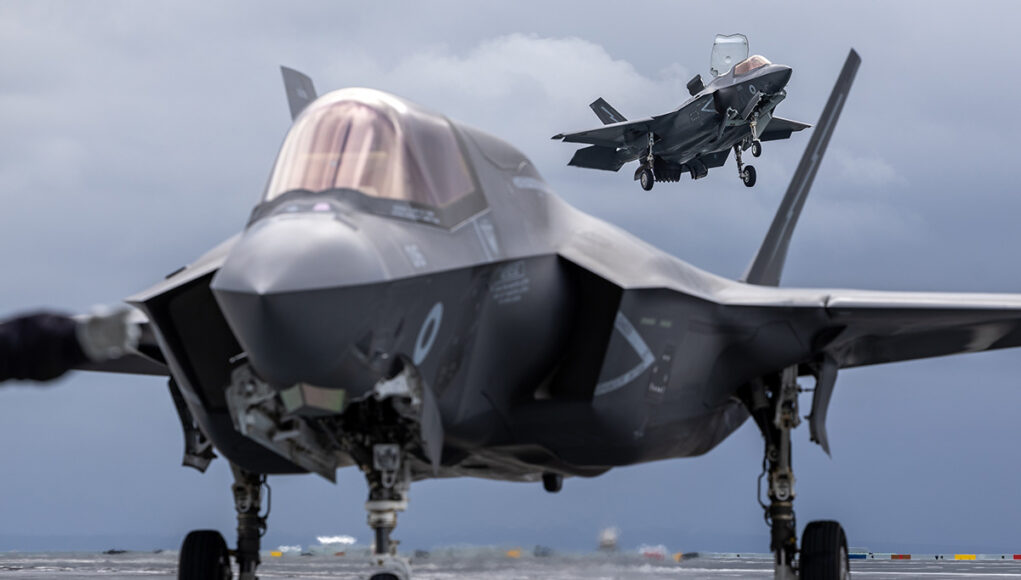

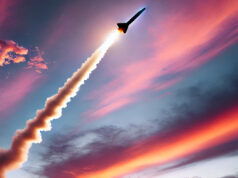
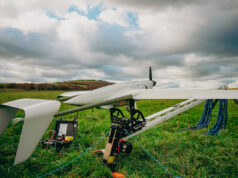
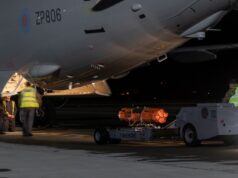
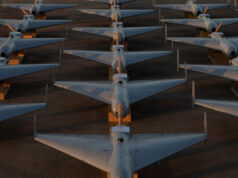
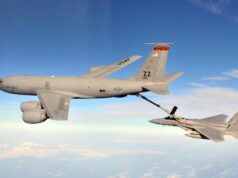
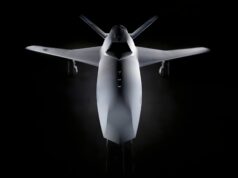
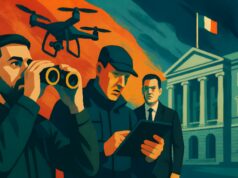
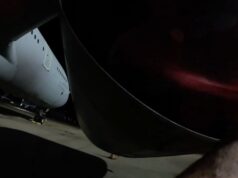
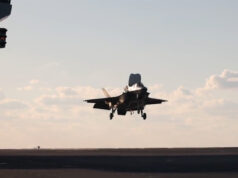

May as well skip Marham and head straight for their sisters in the Med
I’ve been told on here that they need to go through a series of checks before they are accepted, and that a proportion of those checks happen after they reach the UK. I don’t know how long on average it takes before they are made available to a unit but it’s not immediate.
Minimum number must be at least 100.
Realistic number would be minmium 72.
So when we remove the 3 oranges for the test and evaluation squadron, you have 44..2 squadrons of 12 and a OCU of 12 is 36 then you need 20% for the sustainment fleet so 8 that takes it to 44…clever stuff. What have always found interesting is that they expect to order another 26… but a further squadron would only need 12 +20% sustainment so 14-15 aircraft, so I have never understood the extra 26..it makes no sense as it’s way more than you need to stand up an extra squadron, but not enough to stand up 2 squadrons ( you would need 30 for that).
So for some reason the RAF are looking for a far bigger percentage sustainment fleet for the F35..24 sustainment fleet for 3 front line squadrons, compared to typhoon which will be running 6 squadrons with a none existent sustainment fleet of around 9-10 aircraft. the tranche 2-3 only consists of 96 fighters.. 6 squadrons + OCU + Falklands flight + test and evaluation totals about 86-88 deployed aircraft..
That’s some odd maths for some reason.
might that extra 26 be partially for attrition? Undoubtably some will be lost over a 40+ years ops lifetime.
Howsit Klonkie!!
Hey Geoff , all tickety boo with me thanks- hope you’re well Squire!
All good my friend-we soldier on despite the ANC’s best efforts to destroy everything. The coalition with the DA has shown some mild improvement all round but still a huge mountain to climb!! One of our frigates is in dry dock in Durbs at the far end of the bay awaiting spares for a repair-apparently been there for more than a year 🙁 Our Armed Forces continue to suffer with a lack of competent leadership and vastly reduced budgets-what to do!!? On the other hand we read about low availability of escort numbers theat even the RN are having to cope with so to some extent we are not alone!
Cheers from sunny Durbs
I have a feeling that the Squadrons will require a higher number of “available” aircraft to maintain a 12 jet Squadron. Which I get from the higher maintenance burden the F35 has.
I think the tail wagged the dog here.
The number of frames in this initial tranche was finance constrained.
The follow on order hasn’t happened because of the glacial progress with other things such as Blk IV [OK that became such as thing that it was split into the hardware baseline to take the software refresh] and weapons integrations and MoD are very sensibly waiting until LM feel able to deliver jets that can actually do what is required rather than pay for the jet and then pay again for it to be upgraded to a functional specification.
Given that RAF is struggling to generate enough ground crew and pilots and LM are struggling to generate enough spares it isn’t unreasonable to say that time and effort are better expended fixing these issues before getting rows of frames that will, from point of delivery, just be depreciating assets. That is the accounting view.
The defensive view is that we need everything we can possibly get by yesterday!
To be fair I have pondered this too and I wondered if it will be the case that they need extra jets to make up for the TR3 upgrade program that will have longer periods in maintaince as well as the rotation of routine maintenance, this could take several years to get though all the necessary air frames?
For some reason the figure 96 repeatedly crops up in these discussions, but I believe the correct figure is 107 tranche 2 & 3.
I’ve read on more than one occasion that the aspiration is for the F35B squadrons to be larger than 12 aircraft (16?), but that could be a false rumour.
96 single seat. 11 twin seat. Typhoon and the F35 fleets are pooled. So aircraft are moved around the squadrons depending on operational need.
96 front line fighters and 11 trainers, so you cannot count the trainers in front line squadrons numbers and the OCU has always had a full set of single seat front line fighters as well as around 5-6 two seater trainers.. generally the rest of the 2 seaters would have been scattered around the front line squadrons.. if you look at the FOI that included a record of where each airframe was..the frontline squadrons all had 12 single seat front line fighters and 1-2 two seaters and the OCU had 12 single seat fighters and 6 trainers.
I wonder if jets have that new car smell?
Initially yes but I have heard a rumour that the United States has installed a secret switch that changes the smell from “new car” to “rotten cabbage” if they are unhappy with the buyer.
Or perhaps, if cars have a new Jet smell?
I’m hoping that additional 27 will be upped to a much more realistic 36. That way two more squadrons can be generated.
A total fleet of 85 is a much more realistic requirement to face current threats.
Hopefully SDSR will deliver those numbers required.
Realistically what current threat are you seeing?
Russian air force has proven to be completely ineffective and kept at bay by a few dozen Ukraine jets and they share a land border. Ok it will rebuild once the Ukraine war ends and learn lessons but that will take decades, as they would need to redesign their fighters for offensive operations which they have proven to be useless at.
Argentina is no longer capable to retaking the Falklands
Rest of the empire is gone.
If we have to go against china we will be a minor partner, as US and local nations will provide enough fighters.
Not saying there couldn’t be future threats we aren’t today seeing but I can’t see any realistic current ones.
My view is that the F35B is a multi role platform not intended for just the air to air mission.
The UK definitely shouldn’t ink any contract for any more unless LM guarantee the full integration of UK advanced armaments such as storm shadow, Spear 3, LMM, ideally air launched NSM will be purchased for the anti shipping role.
Other missions F35B can perform are air defence suppression, C3 sites, airfields/ ports and critical infrastructure such as power plants, relay stations, bridges, rail networks etc
An additional 36 are crucial to ensure adequate numbers of platforms and crucially the ability to deploy both carriers if needed.
I would say the major threat comes from Russian A2/AD assets in support of their ground forces.
The Russian airforce is a joke but if not properly dealt with their ground based air defence can be formidable. They rely on this to support their slow moving artillery heavy ground forces which would otherwise wise be wiped out by our Air Force.
The F35 is tailor made to over come this threat but with the US potentially pulling out of NATO the UK may need to provide the bulk of the SEAD/DEAD capability in any operation in Northern Europe. Given our access to code as a tier 1 partner UK F35’s may be the only ones available in a European war.
A force of 80-100 F35’s is probably sufficient for the entire task.
I wouldn’t say the Russian Air Force is a joke. The joke is the command and employment of the Air Force, which also includes training and maintenance. For the battlefield the Russian Air force is tasked with providing local air superiority and close air support. It has failed to achieve either, why? On paper the Russian Air Force should have decimated Ukraine’s in the first month of the invasion. Yet it proved it could not target mobile SAM and radar units or provide coordinated C2 to maximize its footprint and dominance over a given area by deterring Ukraine’s small Air Force from having a go. Was this down to the aircraft Russia has, its weapons or doctrine?
To be brutally frank it is a combination of all three, but I would also add training as another failure. As unlike NATO, I don’t believe that have a realistic Red Flag type of exercise. Where they have an capable opponent to fly against, be that air or ground units. Therefore, they don’t know how to react to a realistic peer threat.
The Su30/35 and Su24, should have given them air superiority and the ability to hit designated ground targets. But it seems the stand-off air to ground weapons that equip these aircraft, are either too few in number or rubbish by today’s standards. This is particularly true for their main anti-radiation missile, the Kh58. Which to hit its target, the target radar must keep its radar on. It seems it doesn’t have a GPS to “memorize” where the radar was transmitting from. Which is one of the main advantages HARM has.
If Russia had some competent leaders within their Air Force, I think things would have been slightly different. Though their doctrine and training would need to change. Where they actually incorporate lessons learned from the War.
Jim as I understand it the UK does not have access to the code and any benefits from tier1 expired when the F-35 came out of initial low rate production.
That’s not was the government says. It’s not really a code issue but mission data file issue which we can control but no one else other than Israel can.
And yet, countries around the world are arming.
Why should we be different?
Why did Brazil want an amphibious capability?
Who are they going to use them against?
You have a military that is ready, and able, as you never know.
Just like insurance.
Don’t forget it’s beyond that Daniele, most people get the insurance, but it sells the requirement well short, as insurance is a passive way of managing a risk insurance does not prevent the thing from happening. The core and major reason for a strong armed forces it’s that it’s not just insurance but it massively reduces the risk of armed conflict via deterrent and the 3c of deterrent. A good deterrent may cost you 3%-4% of GDP that’s expensive but a major existential war will cost you 30% of your GDP and shatter your economy for decades, and that’s if you win.
Very true J.
I don’t think Starner got the message, no more than any of them since Thatcher.
I think he has got the message which is why the new head of the NHS is clearly stating not to expect oceans of new money and to fix the efficiency of the organisation.
I don’t think Starmer is at all a defence geek but ironically from European contacts I do hear that he is well respected on his understanding of defence matters and his clear and persuasive articulations.
So whilst there is clearly a struggle going on with Robertson to tone down the SDR requirements from a full on [semi?] Cold War posture there is a realisation that serious money will need to be committed in short order.
The early Labour positions of essentially glorified student politics have run into realism
– net zero is going to be sacrificed to keep British Industry
– people can and will vote to be able to afford to set their thermostats so they don’t freeze to death – we are in a crazy situation where the middle classes cannot afford to heat their homes
– pouring money into the NHS doesn’t work until how it is spent and the outputs required are bottomed out: Boris was told this but ignored it when he put his £16Bn (?) into it and it was just wasted on rocketing inefficiency and the population understands this quite well now
– if you could introduced a referendum to cap various aspects of the benefits bill and culture you would win by a landslide – Starmer has more of an issue with his MPs that with the population on this – if he tackles this *wisely* he almost certainly picks up votes. OK a lot of this was caused by G Brown and some dreadful decisions over how universal credit worked.
– most of the population understand that our defence is in a dreadful place and polls show a clear majority for increased defence spending – that has cross party support and if explained properly will accumulate votes
– and lets not even get onto migration or how it is suddenly OK to say that to apply for xyz you now need to be able to speak proper English…..as if that was some kind of moment of epiphany…..
Some of this is Fromage driven but most of this is really people actually forming their own clear views on what is going on with disrupter debates that are not around the policies being debated by the big four parties.
The first problem is that there is no honest policy framework from anyone because it is so diluted by the spin and polling machines of the main parties. You can’t say that because it will offend….. Everyone knows that this fudging approach isn’t working but nobody is brave enough to stand up and pronounce differently. However, the dial is actually shifting quite fast on what Labour now realise has to be acceptable. Labour are in some respects now to the right of where Rishi and Boris were – which is quite interesting of itself.
Ultimately people are fed up with being fed up with being patronised and the policies that are being fed to them being bent out of shape to suit the dinosaur of the unadaptable Westminster political groupings that have to be placated to keep MPs onside because of what ‘they stand for’….
Any major conflict with Russia that does not include a major contribution from the U.S. will require the RN to lead the destruction of the Russian Barents and Kara sea bastion and the only way to do that is to ensure air superiority in the high north and for that you need carrier based aviation.
The Russians can throw a couple of squadrons of navel strike aircraft + support, so the RN needs to be able to dominate that.. 3 squadrons of f35B on a carrier would allow complete air superiority in the seas of the high north the RN and friends were concentrating on, this would allow the destruction of the bastions and the destruction of the northern fleet and long range strike capabilities thereby ending the threat to the Uk ( always fight your war in the other sides turf goes a long way to winning) .
For air superiority you also need a credible and robust AEW capability, which does not exist with the Crowsnest radar.
One thing people often forget is the RAFs AEW capability is a strategic asset. It can stay airborne for a very very long time and has a very long range. Essentially the high north can be covered by and supported by land based AEW, this would always be preferred if possible as the large land based platforms are simple better than any carrier based platforms.. the carrier is the base for the tactical assets, the fighters.
The UK are set to buy 3, possible 5, Wedgetails. One of which will probably be unavailable do to maintenance and repair. The North Atlantic is a very large area to cover.
At the same time, the F-35B has a pretty short range on internal fuel, so without external fuel tanks or organic tanking, they won’t be able to cover much ground.
Also, I wouldn’t discount the E-2 Hawkeye with its ability to scan thousands of square miles so easily. Land-based based aircraft might not always be available when you need them.
Hi Collin the F35b is actually a pretty long legged platform compared to most 4th generation fighters. Again there is zero reason why you cannot use your strategic air to air refuelling to support your carrier borne aircraft.. in reality if the carrier is with 2000miles of a uk or allied air base it can use land based air to air tankers.. in regards to the EAW we will almost definitely get 5 and where do you think the will be sitting in any conflict.. not over the UK they will be sitting over the Norwegian Sea.. perfectly placed to support any carrier.
Comparing your scenario with that of the experiences of the US carrier fleet in the Red Sea it seems you are ignoring what may be the greatest risk, ballistic missiles. The Houtis have fewer quantities of lower specification missiles than the Russians yet the USN treats them with extreme caution. No doubt the RN would do the same, putting them near the limits of F-35B range to attack Kola.
The same problem exists in the FE with China sinking a lot of money into their big long range anti ship missiles. No aircraft necessary.
Russia does not have any anti ship ballistic missiles.. to sink a Carrier you first have to find it then track it and pass that information onto whatever is delivering the kinetic effect.. the Houthi are essentially using an enclosed sea and attacking at very short range.. finding a carrier in the open ocean and getting a kill chain for a weapon fired 500 miles away. Never been done.
Thanks for your comment. Sorry I was equating the Zircon as a AShBM forgetting that it was air launched. Unlike the Houtis the Russians have satellites with I assume the capability of tracking ships like carriers so finding it would be less of a problem for them. They would still have the issues the Houtis have of getting through our carriers defences not a trivial task.
Russia is regenerating and learning fast. They’ll be a major threat in 3-5 years time
They won’t be. They can’t afford the military numbers they currently have and their economy is falling apart. The war can’t be maintained indefinitely and when it ends they are going to have hundreds of thousands of unemployed people as the country stops being on a war fitting, hitting the economy further. It’s going to take a long time for Russia to recover from this war.
Not to mention their air force hasn’t shown any signs of improving. They only use it when Ukraine runs short on anti air missiles and the momnent Ukraine gets more they shot down multiple planes and Russia stops using their air force again.
Russia may be showing that it was a paper tiger, and its been struggling to procure new aircraft at scale because of sanctions and its current reliance on its domestic aerospace industry. However, if the Ukraine war ends it will be much easier for China to supplement Russian domestic production, and we could see a very rapid up arming of the RuAF. To counter that we and the rest of Europe need to start preparing now.
Additionally, China and Russia will be less hesitant about selling their high end aircraft to other anti-western powers such as Iran. So we equally need to be fully capable to meeting those increased threats.
In theory yes but in practice they don’t have the money. They need to rebuild pretty much all their military equipment, at the same time they need to rebuild their economy, they simply don’t have the money for it. They also need to train a professional army that isn’t just used as meat waves as it’s running out of people willing to fight. Additionally that assumes they will be done with Ukraine, which won’t happen to they occupy it fully which at this rate will take decades.
I read someone had done the maths. If a turtle had set off from the Russia border at the date the war started, it would have already reached the polish border. Russian military is literally moving slower than a turtle.
If nothing else they need to completely redo their sat nav system as its accuracy is terrible. They needed ground based boosters in Syria to allow accurate missile strikes, which they don’t have access to in Ukraine and would definitely need against NATO.
The combined European air force and long range missiles like himars and equivalent would absolutely destroy russian supply chain. Ukraine has managed to do the same with a handful of platforms, Europe would have hundreds, even without the US.
Not to mention if Europe was pushed to war and called up it’s reserves, the combined size of it’s army would dwarf Russians
I’d point out that the Russian Airforce isn’t being kept at bay by the Ukranian Airforce, but that two nations with relatively weak airforces but with massive investments in Air Defence are stalemating each other.
Whilst true today but at the start of the war before all the western air defences were flooded in, Ukraine was keeping the russian air force at bay. Mainly because they were forced to fly low due to lack of decent targeting system.
Plus seriously terrible target identification and authority to fire bureaucracy, needing to go all the way up the many layers rather than allowing decisions to be made at a lower level.
“Note that it would have been 48 if one didn’t crash”
The US Navy has just lost two F/A-18F Super Hornets overboard from the USS Harry S. Truman. It happens. Get over it and move on
O/T but I think I heard one of the US team at the announcement of the UK-US trade deal say that the UK were planning to spend $millions on Boeing airplanes. Anyone else hear that?
Yep, but don’t get your hopes up, it’s British Airways
🤣😂🤣😂🤣🤣🤣 hillarious. Probably right.
BA announced today that on top of the 18 Boeing/Airbus aircraft that they ordered in March they are ordering another 53. All seemingly for delivery by 2027/8. These may be part or all of the $Billions Trump mentioned.
Hopefully more Poseidon and Wedgetails about to be ordered then. That’ll be good.
We don’t need an army centric defence posture. The Europeans can handle Mad Vlad orc hordes. We need a strong Navy and strong RAF as the foundations of our armed forces as well as an integrated multi layered air defence network for defence of UK mainland and key defence and national infrastructure sites.
Agreed, but we do need an army that can turn up and meaningful contribute because in the end from a deterrent point of view battle groups on the ground do matter as they evidenced skin in the game and provides a communication of credibility beyond sending a few aircraft, that can be somewhere else very quickly. So those battle groups actually communicate very heavily, where as the RAF sitting back in it’s nice distance airfields show capability, they don’t communicate credibility of intent in the same way.. it’s the same with surface groups vs SSNs.. SSNs are a profoundly good capability but they are rubbish at communicating intent..a CBG in the high north a a very focused communication of credibility and capability.
Just being really really powerful is unfortunately never enough you need the 3 cs of deterrent capability , credibility and communication to be an effective deterrent, which is why we need a decent army and the carrier battle groups.they are essentially the The f35 is a strike aircraft, its very purpose is to attack targets and yes sailing a carrier battle group around the world is one of the things that very much does make you a global power, the very nature of the act proves that…your essentially say just because a car drives at 70mph down a motorway does not mean it’s a car that can drive at 70mph of credibility element of the deterrent.. the aircraft, SSNs, cruise missiles etc are all about having capability.
32 B787-10 to replace B-777-200? Just as the 787 has a front bulkhead issue show up.
Billions by a British airline 🤦🏻♂️
Owned by a Spanish company. Still we can claim its ours for Trump’s purposes.
I think they came via the Southern route. I spotted a voyager around the Azores on two separate days.
Jim as I understand it the UK does not have access to the code and any benefits from tier1 expired when the F-35 came out of initial low rate production.
Shame they dont work as advertised
Seeing that we are in the throws of designing and building our own 6th gen fighter “Tempest” 2035 are these only here for ten yrs ? an expensive stop gap someone put me right on this!!!
F35b and Tempest are different Aircraft for different Roles – Tempest will replace Typhoon ( hopefully).
“hadn’t have crashed. Get your tense right.
Humans make mistakes, Chris.
That’s why comments fields exist :¬)